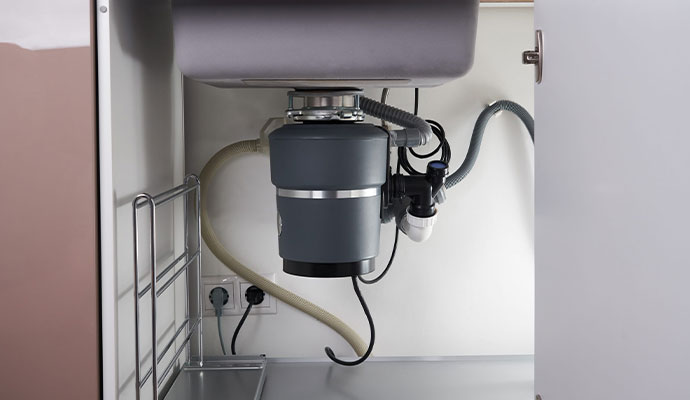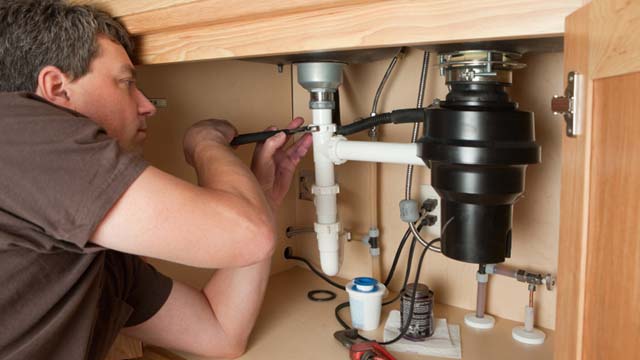The article author is making a number of great annotation about Why Is overall in this great article underneath.

Waste disposal unit are important kitchen area home appliances that assist in throwing away food waste effectively. However, a leaking garbage disposal can be an aggravating and untidy problem to manage. Luckily, many leaks can be taken care of easily with a couple of straightforward actions. In this post, we will discuss exactly how to take care of a leaking garbage disposal effectively.
Intro
Garbage disposals are installed under cooking area sinks and are designed to shred food waste right into smaller sized pieces, permitting it to go through the pipes system easily. While these gadgets are normally trusted, leaks can take place over time because of wear and tear, loose connections, or damage to the device.
Typical Root Causes Of Leakages in Garbage Disposals
Worn Seals and Gaskets
Seals and gaskets play a critical duty in avoiding water from dripping out of the waste disposal unit. With time, these components can degrade, resulting in leaks around the disposal unit.
Loose Links
The links between the waste disposal unit and the pipes system can end up being loose over time, creating water to leak out throughout procedure.
Fractures or Holes in the Disposal Device
Physical damage to the waste disposal unit, such as splits or openings in the housing, can also result in leakages.
Recognizing the Resource of the Leakage
Before trying to fix a leaking waste disposal unit, it is vital to recognize the resource of the leak. This can typically be done via aesthetic examination or by carrying out simple examinations.
Visual Inspection
Examine the garbage disposal system very carefully for any kind of signs of water leak. Pay very close attention to locations around seals, gaskets, and connection factors.
Examining for Leakages
One means to check for leaks is by running water via the disposal unit and looking for any visible indications of leakage.
Tools and Materials Needed for Repairing a Dripping Garbage Disposal
Before starting the repair work process, collect the necessary tools and materials, including a screwdriver, adjustable wrench, plumber's putty, replacement seals or gaskets, and epoxy or patching product for fixing splits or holes.
Step-by-Step Overview to Dealing With a Leaking Garbage Disposal
Turn Off the Power
Before trying any fixings, make certain that the power to the waste disposal unit system is shut off to prevent the danger of electric shock.
Situate the Leak
Identify the specific location of the leakage and determine the reason.
Tighten Links
Use a wrench to tighten up any kind of loose connections between the disposal unit and the plumbing system.
Replace Seals or Gaskets
If the leakage is because of worn seals or gaskets, remove the old elements and replace them with brand-new ones.
Patching Fractures or Openings
For splits or holes in the disposal system, usage epoxy or an ideal patching material to secure the damaged location.
Examining the Garbage Disposal After Fixing
As soon as the repair work is complete, examine the garbage disposal by running water via it to make sure that the leak has actually been solved.
Preventive Maintenance Tips to Stay Clear Of Future Leaks
To avoid future leaks, it is necessary to do routine upkeep on your waste disposal unit. This consists of maintaining it tidy, preventing placing non-food products or difficult things down the disposal, and periodically checking for leakages or various other problems.
Conclusion
In conclusion, fixing a dripping waste disposal unit is a relatively uncomplicated procedure that can be completed with fundamental tools and products. By adhering to the steps outlined in this write-up and exercising precautionary upkeep, you can keep your garbage disposal in good working problem and stay clear of expensive repair services in the future.
What to Do About a Leaking Garbage Disposal
A leaking garbage disposal often goes unnoticed until you confront a sopping cabinet, a foul-smelling puddle, or an audible drip-drip-drip from the unit. The fix can be frustrating, too, because the leak can stem from a number of components in the system. Fortunately, with a little sleuthing, you can zero in on the leak and—depending on the exact location—stop the icky oozing and repair the component that caused it. Worst case scenario, if it turns out that the garbage disposal must be replaced, installing a new one is a reasonable do-it-yourself task for those with basic plumbing skills. Read on to keep the cash you’d otherwise hand over to a pro.
Prepare to find the leak
Prior to testing the garbage disposal for leaks, unplug it at the wall outlet and turn off the power from the breaker box to prevent electrical shock. Then insert a watertight sink stopper into your sink drain and wipe the unit dry with a clean cloth. In any handy container, mix a few drops of food coloring into a few cups of water, and pour the dyed water onto the sink stopper to help you locate the leak.
Investigate the source
the top, where the disposal meets the sink drain the side, where the dishwasher hose or main drain pipe connects to the disposal or the bottom of the unit Inspect each of these locations while gliding a light-colored rag over the unit; the dyed water will readily show on the rag and reveal the location of the leak. If a leak isn’t immediately apparent, remove the sink stopper and pour a few more cups of dyed water down the sink drain, then check for leaks again. Leaks near the top of the unit are more likely to show themselves while the sink is plugged, while side and bottom leaks are more noticeable while the sink is unplugged.
The metal sink flange that sits directly inside the sink drain is typically sealed around the top with plumber’s putty (a clay-like sealant) and then secured from under the sink with bolts. If the plumber’s putty deteriorates, or the bolts loosen, the flange can no longer form a watertight seal between the sink drain and the disposal—which could cause a leak at the top of the unit.
To reseal the leaky flange, you must first detach the garbage disposal. Start by loosening the screws securing the main drain pipe to the disposal, then loosen the screws in the metal clamp securing the dishwasher hose to the disposal and detach the drain pipe and dishwasher hose from the disposal. Loosen the screws in the mounting ring that connects the disposal to the metal mounting assembly beneath the sink, then pull down the disposal and carefully set it on a clean, dry surface. Loosen the bolts in the mounting assembly with a wrench, then pull down the mounting assembly and set it near the disposal.

Hopefully you liked our article on Tips on Fixing a Leaking Garbage Disposal. Thanks a ton for spending some time to read through our blog post. Loved our write-up? Please share it. Help another person locate it. Many thanks for taking the time to read it.
Click Here